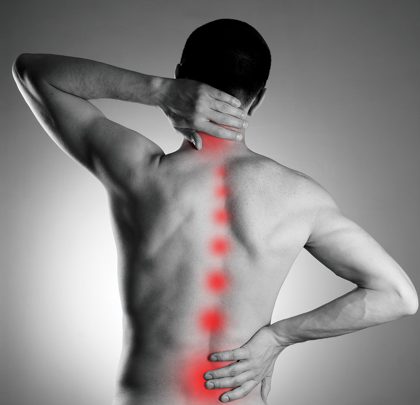Signs and Symptoms
A spinal disc sits between each vertebrae (bones) of the spine. It acts as a shock absorber, protecting the region and allowing the movements of the spine in all directions e.g. bending, stretching and twisting. The discs are filled with a gel-like substance making the disc more flexible.
There are different types of disc problems:
Disc rupture, also known as prolapsed, “slipped” or herniated disc. This is where the inner gel bulges out of the disc causing pain locally. The disc material can also press on an associated nerve root. This may present as pain into the arm if the problem is in the neck or into the leg if the problem is in the lower back. Degenerative Disc Disease can also occur, where natural wear and tear occurs in the discs as we age. Injury to the disc can also occur from accidents or falls.
Our Treatment & Expertise
At Bray Physiotherapy, we take a thorough history to determine the exact location of pain, it’s aggravating and easing factors and mechanism of onset. A physical examination includes assessment of movement, detection of spasm, stiffness, pain and tenderness in the muscles and joints of the comparable area. A neurological examination is performed if nerve root irritation is described.
The aim of our treatment is to reduce pain, restore movement and function, minimise muscle wasting and to restore our patient to a fully functioning pre-injury state as quickly as possible. We place a huge emphasis on a “Hands-On” approach including massage, manual therapy and personalised exercise prescription. Electrotherapy including therapeutic ultrasound and interferential therapy helps to reduce inflammation and pain; dry needling or acupuncture can also be used.
Having identified the cause and nature of the problem we aim to correct dysfunction and educate patients to prevent recurrence. If poor posture at home or at work has contributed we include postural assessment and offer advice to change the faulty ergonomics of sitting, standing or lifting.
Exercise therapy is a vital component to the treatment of the patient with disc problems of the spine. Exercises will restore full range of motion and provide stability to the area as it is healing. A home exercise programme is provided and encouraged, and return to full fitness is desired.


